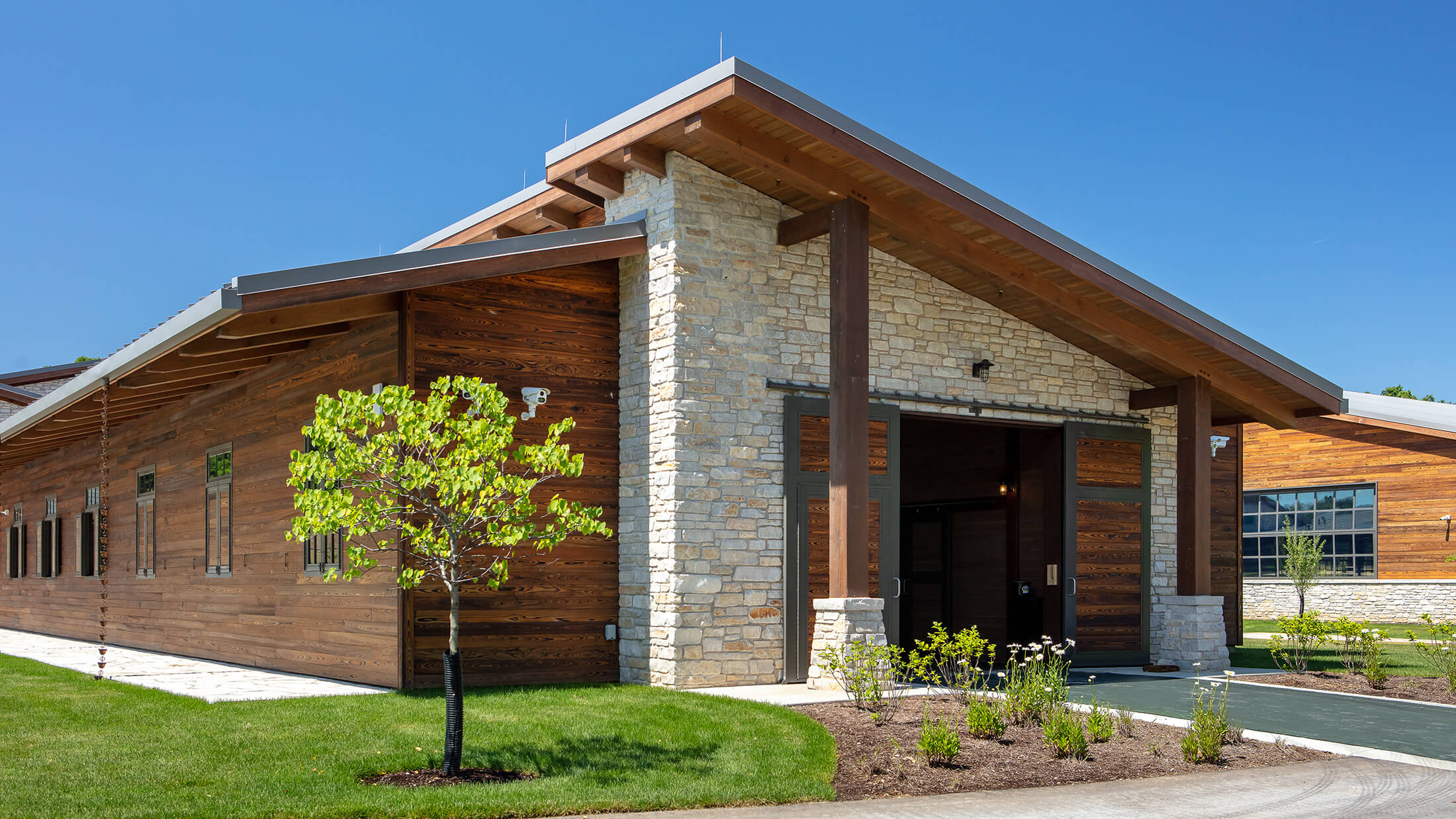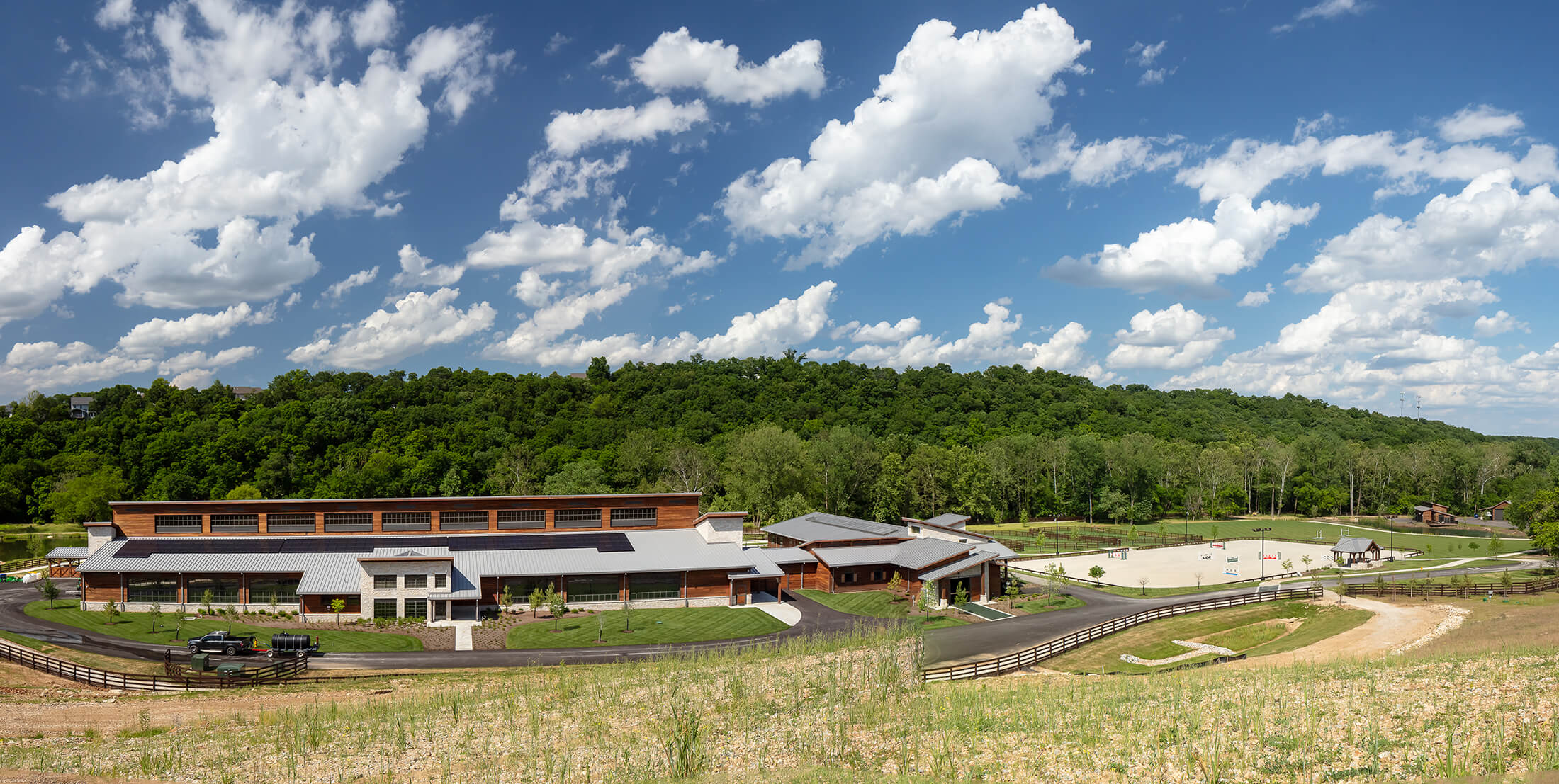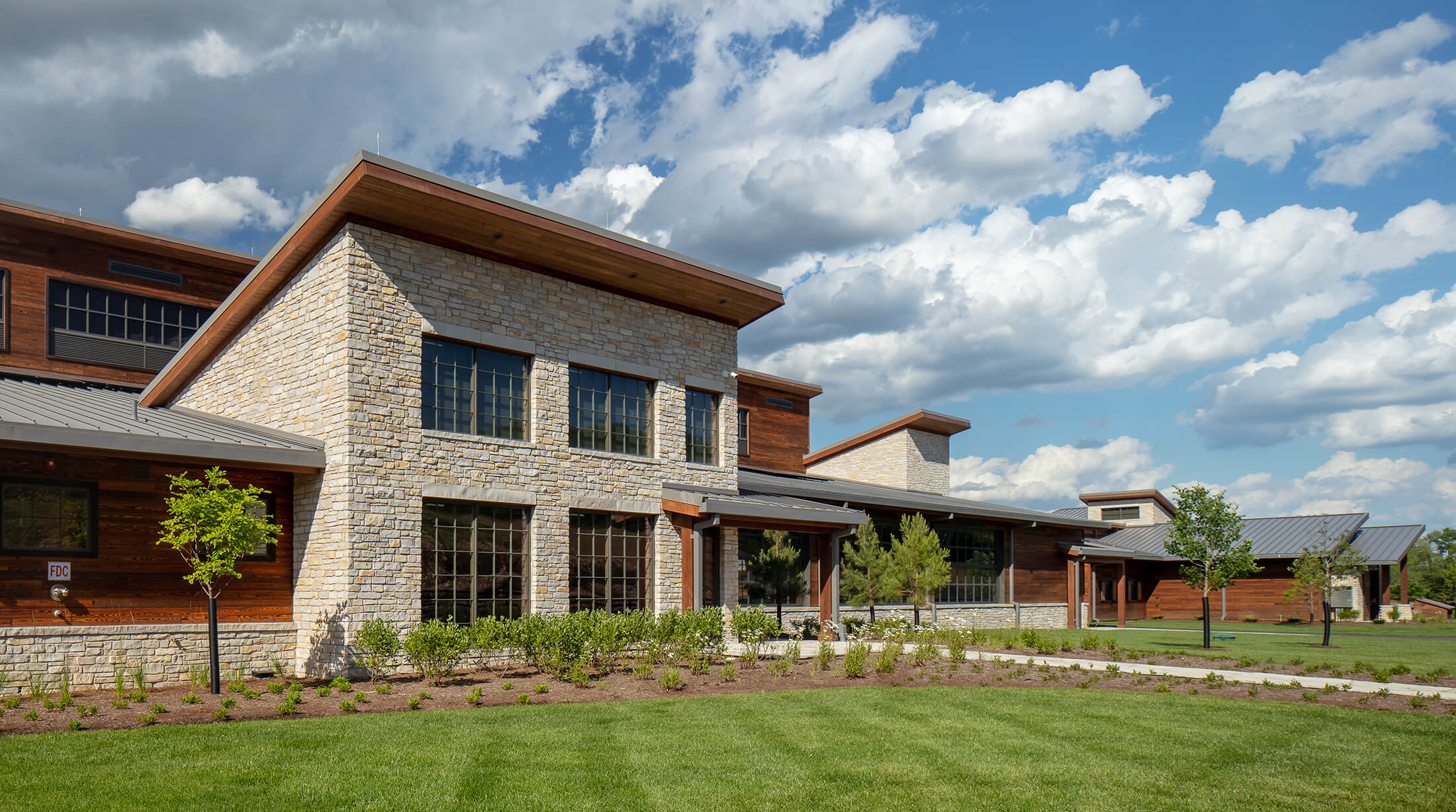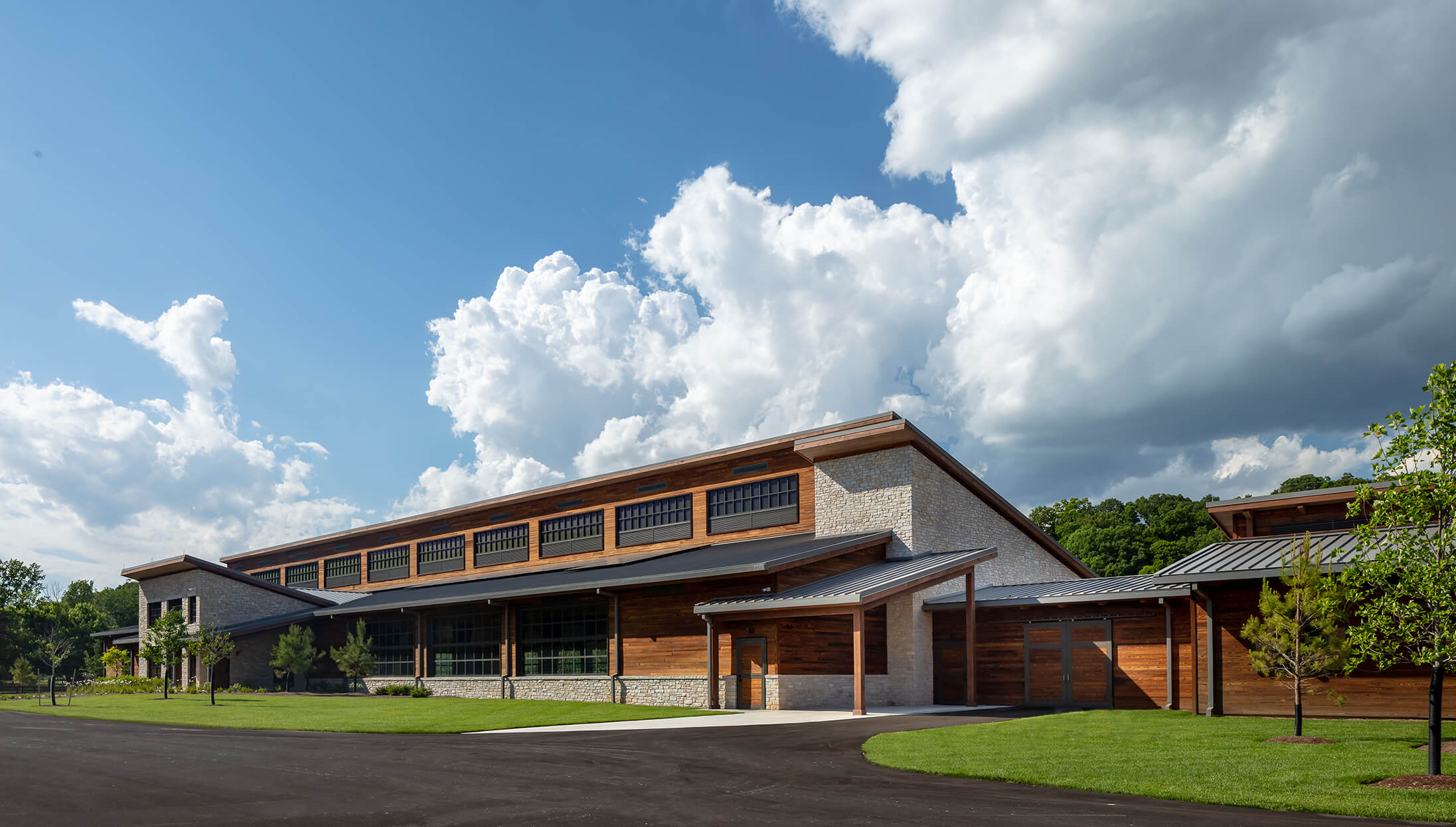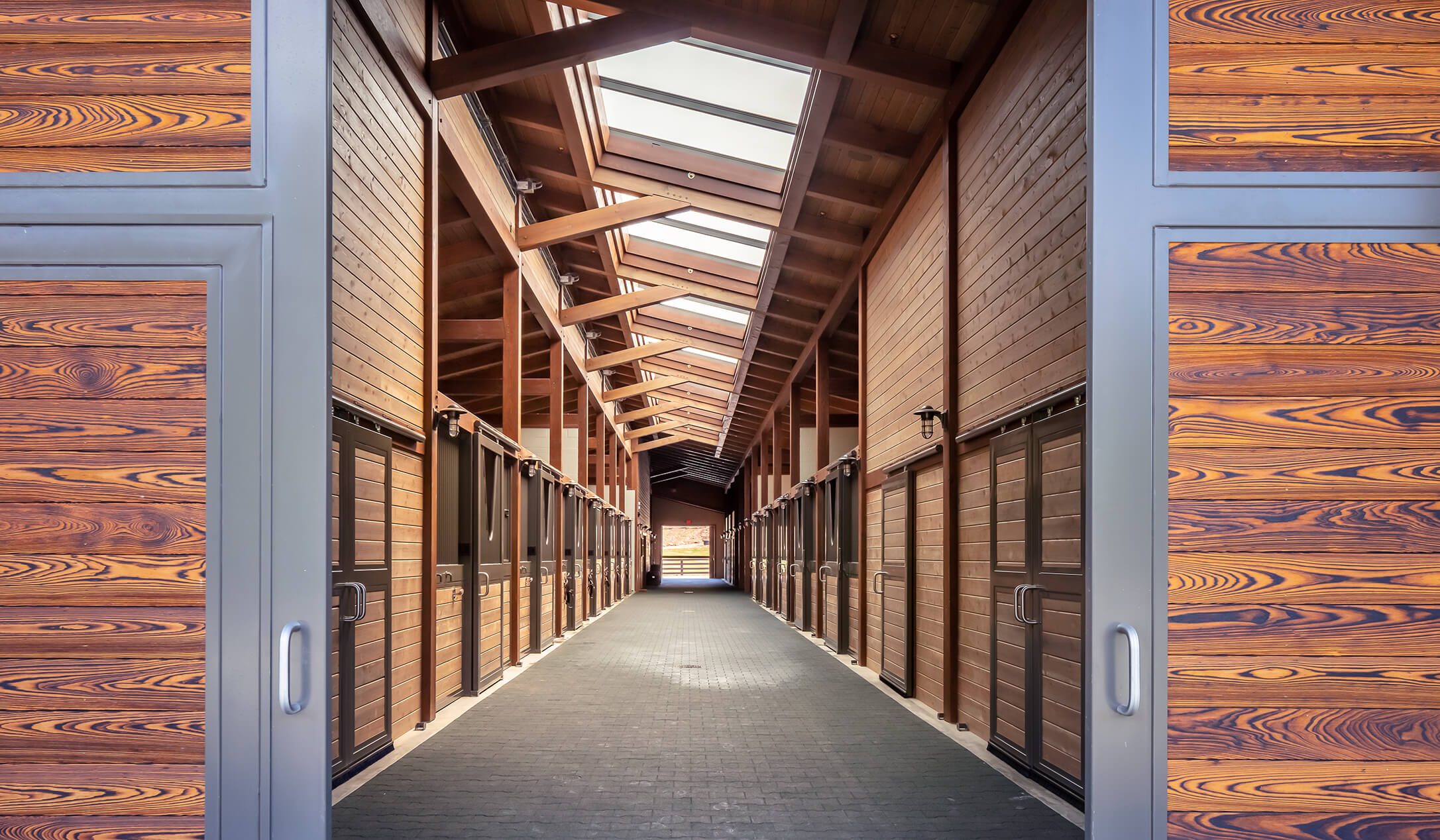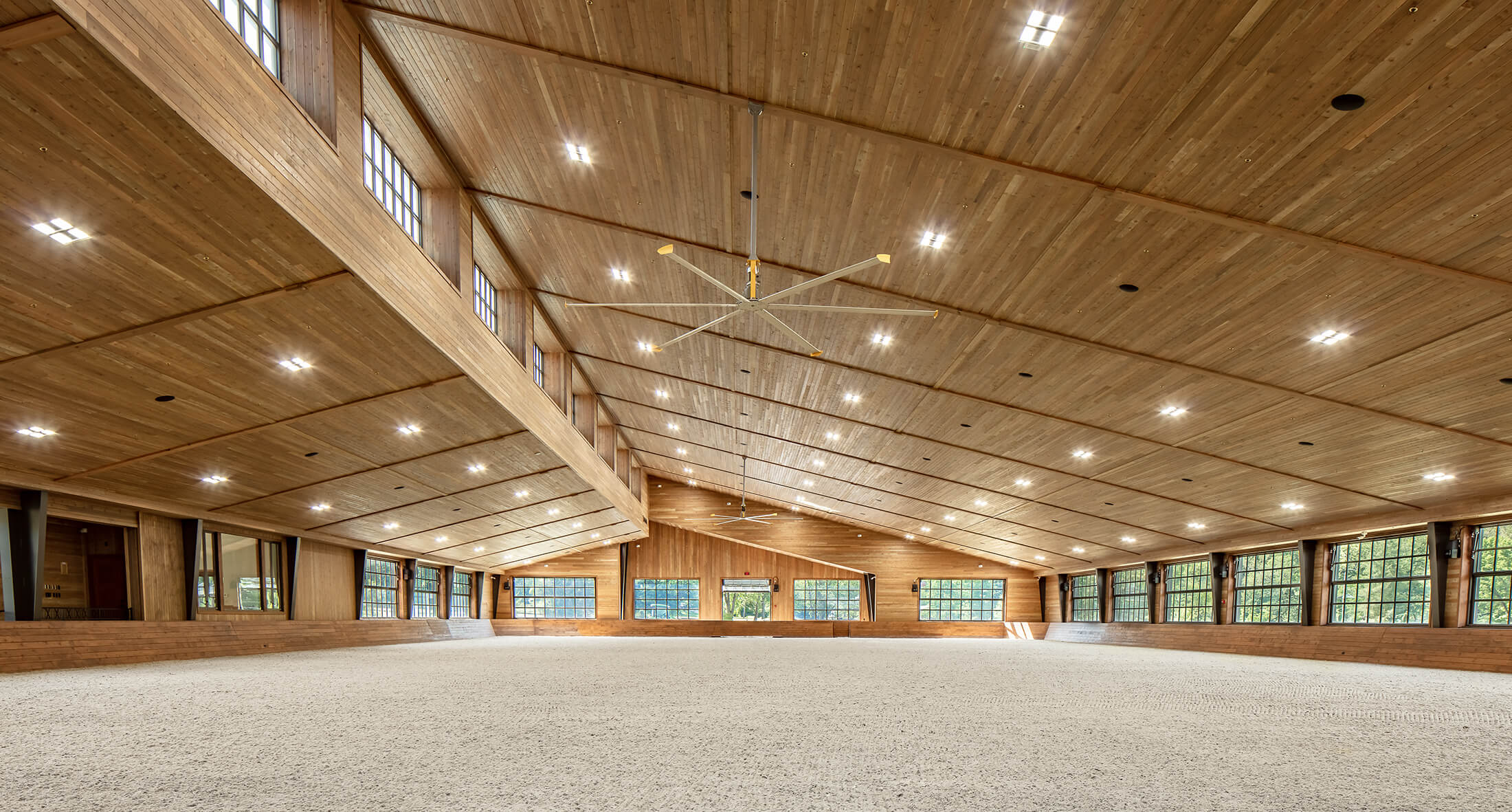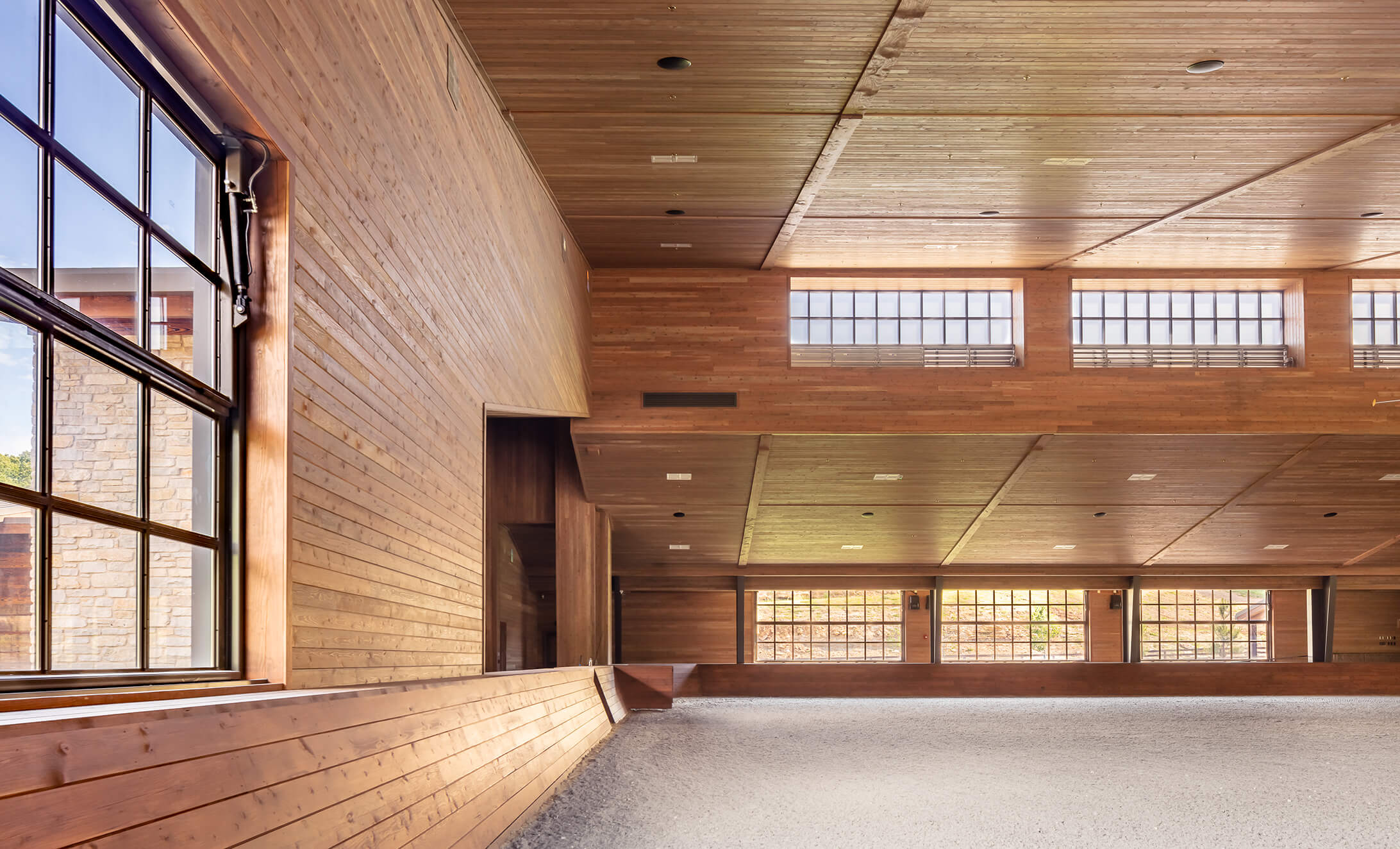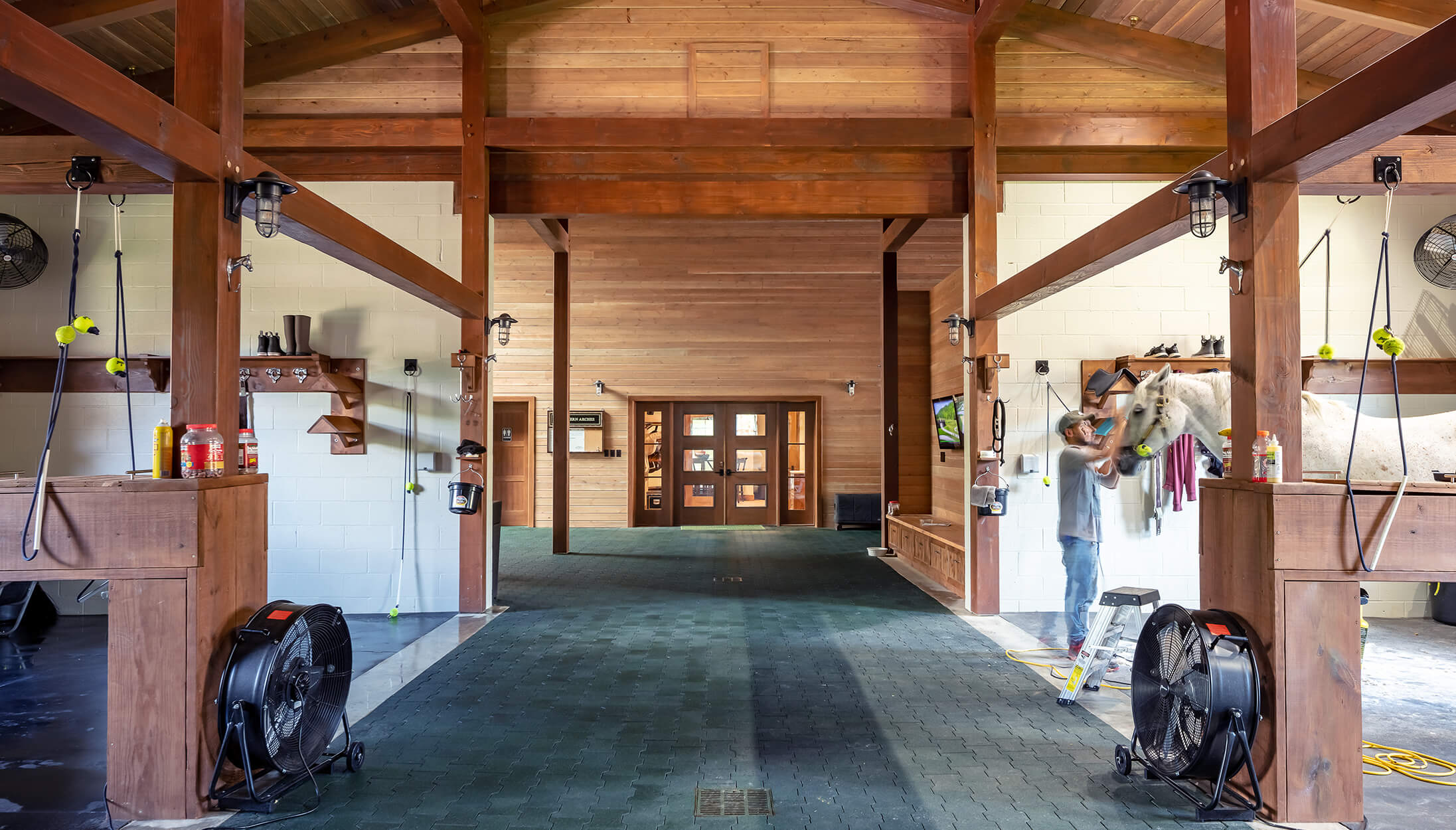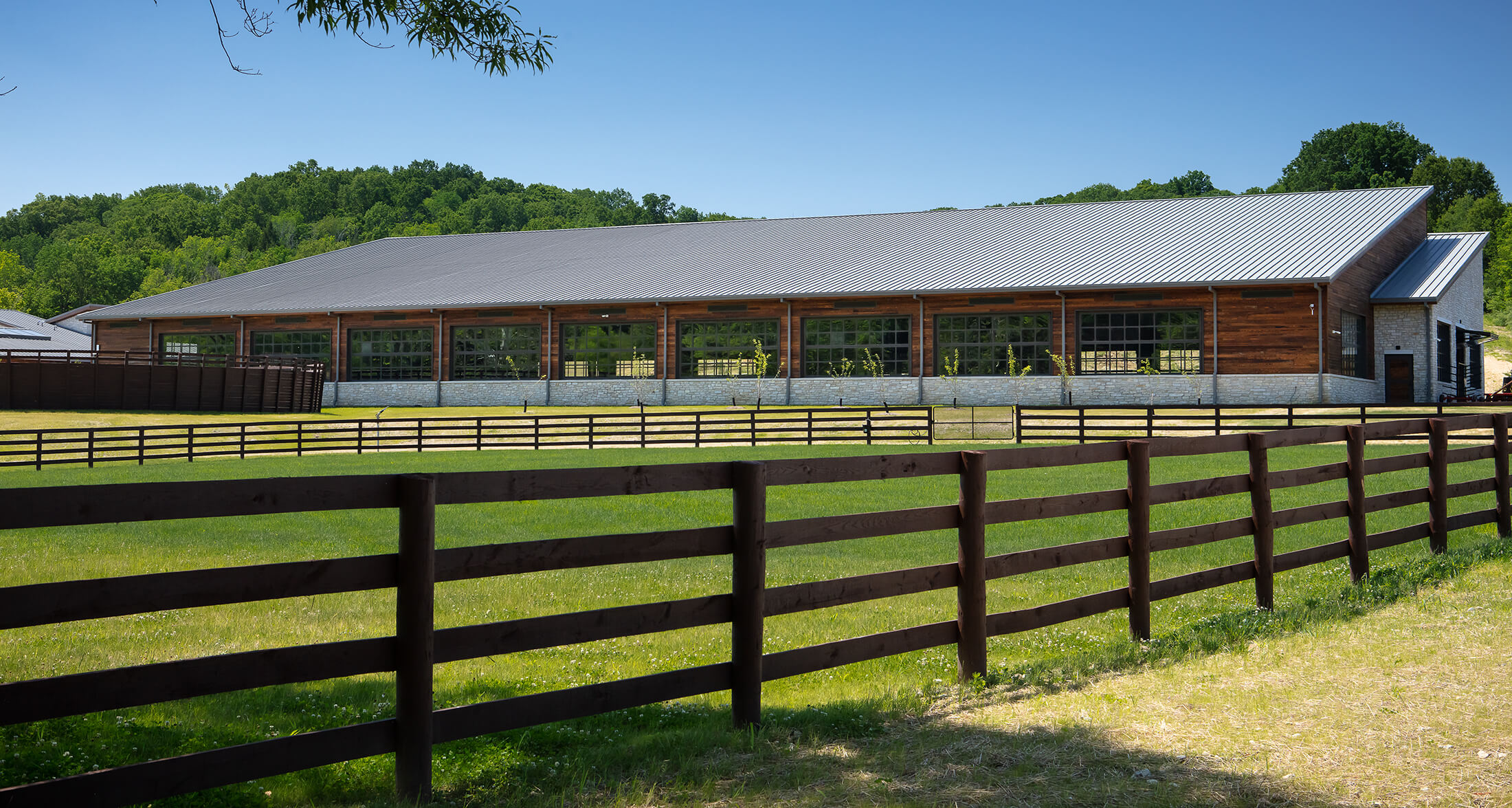Sustainable Farm
Sustainable Farm
Description:
- 12 horse stalls
- 2 wash stalls
- 2 grooming stalls
- 2-stalls for veterinary use
- 120’x240’ indoor arena
- 52.4 acres
This highly energy efficient facility blends appropriately with its surrounding farmland. The design team began with the idea of creating a distinct horizon – modern but with a warm feel. This led to design decisions emphasizing the length of the building while accentuating the vertical elements in the center tack room and second floor lounge spaces.
